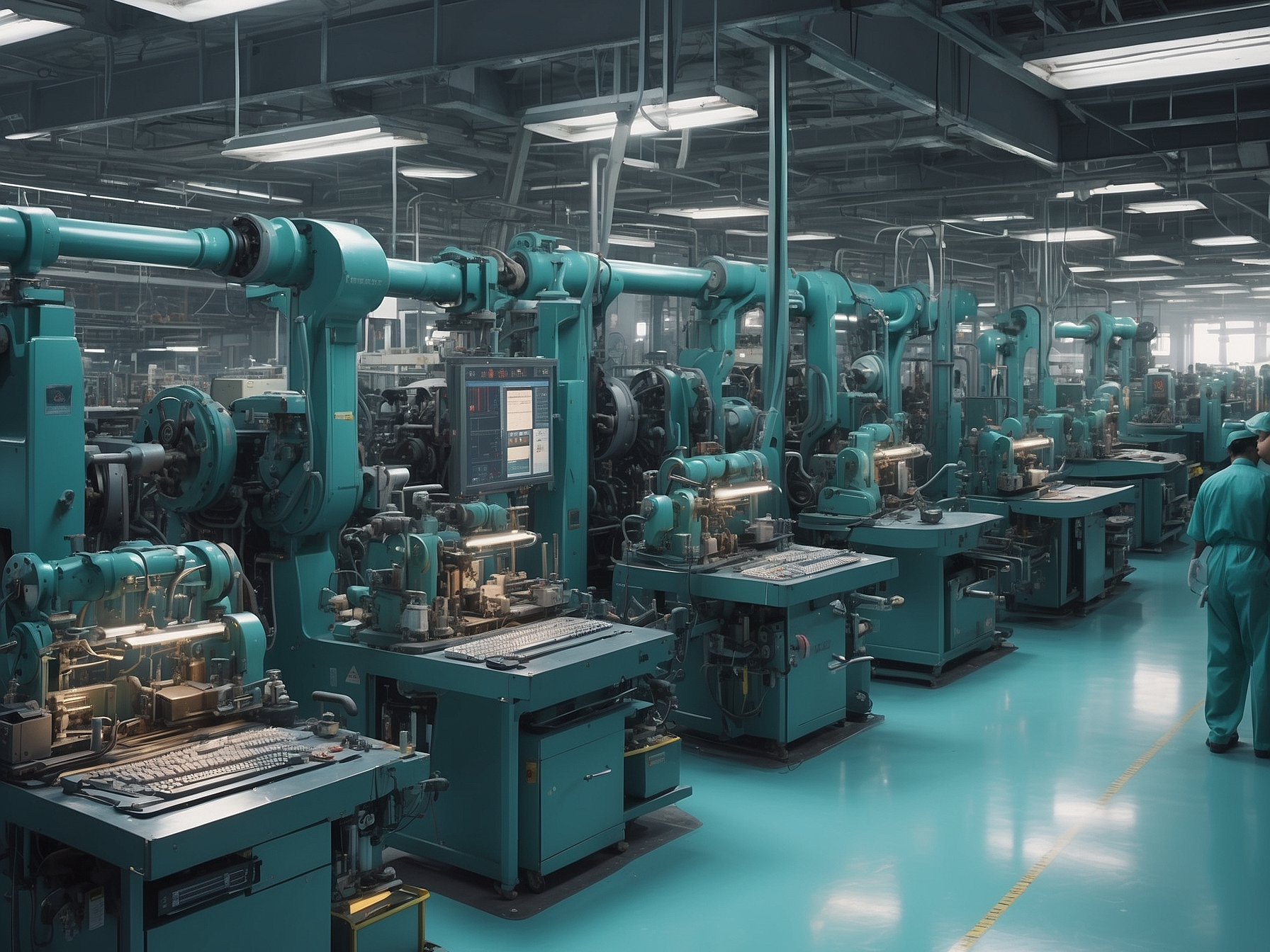Alright, let’s dive into the wild world of economics! Picture this: every economy on this planet is grooving to its own unique beat, following a specific economic system. Think of it as choosing your dance partner at the financial ball. You’ve got three main choices: the strict tango of a command economy where the government leads (and you follow, no questions asked), the free-spirited freestyle of a free market economy where supply and demand call the tunes, and the hybrid hustle of a mixed economy that combines a bit of both styles. Each system comes with its own set of quirks, perks, and headaches. Today, we’re donning our economic explorer hats and setting our sights on the command economy. Buckle up as we uncover the surprising advantages of letting Big Brother take the economic wheel.
Curious about which countries are daring enough to dance the command economy tango? Let’s find out.
What is a command economy?
Imagine this: the government swoops in and slaps a giant “Property of the State” sticker on pretty much everything—land, factories, even that fancy coffee shop on the corner. That’s a command economy for you. In this setup, Big Brother doesn’t just watch; he decides. The government owns and controls the means of production, and it centrally plans every economic move. Decisions about how much to produce, which resources to allocate, how to produce, and what’s available for us mere mortals to consume—all that comes from the top. Command economies typically spring up under socialism or its more intense sibling, communism.
In the land of command economies, the government doesn’t just stop at owning stuff—they also like to keep a tight grip on your paycheck. Ever heard of wage ceilings? Yup, they set limits on how much you can earn. Forget dreaming about that billionaire lifestyle! They also hold the purse strings when it comes to investments, deciding which sectors get the love (and the cash). All this micromanaging aims to level the playing field and build an egalitarian society—one of the supposed benefits of a command economy. But let’s be real, these economies often get flak for stifling innovation and making entrepreneurship feel like a distant dream—not to mention the occasional human rights hiccup. Despite these notorious command economy disadvantages, there are some surprising perks we’re about to unveil.
The upside of Big Brother’s economic control? You might be surprised!
Curious how a command economy impacts your daily grind? Let’s dive in.
The Surprising Perks of a Command Economy
- Consistent operations
- Flexibility that’s actually flexible
- Efficient resource mobilization
- Price and inflation control—say goodbye to sticker shock
- Industries playing nice (because the government said so)
- Inequality gets the boot
- Emergencies handled like a pro
- High employment levels (everyone’s got a job!)
- Investment in public goods—sharing is caring
Consistent Operations: No Surprise Shutdowns Here!
If there’s one thing you can count on in a command economy, it’s consistency. When Big Brother is at the helm, industries don’t get to take unscheduled naps. Companies march to the government’s drumbeat, following a master plan that keeps them operating smoothly over the long haul. Forget about those pesky bankruptcies or sudden shutdowns because profits dipped—ain’t nobody got time for that! The government sets specific quotas—daily, monthly, you name it—and industries hustle to meet them. It’s like having a coach who never lets you skip leg day. This relentless consistency aligns with the nation’s grand schemes for growth and development, keeping the economic engine purring without hiccups.
Flexible Industries: Switching Gears Like a Pro
Wait a minute—flexibility in a government-controlled economy? You heard that right! One of the perks of a command economy is that industries can pivot faster than a startup after a bad product launch. Thanks to centralized control, if the nation suddenly needs more steel for a massive infrastructure project or extra boots for the army, industries don’t argue—they adapt.

The government can mobilize resources and labor across sectors like a grandmaster moving pieces on a chessboard. No red tape, no questions asked. It’s like having an economic Swiss Army knife—ready for any task at a moment’s notice. So while other economies might be stuck in their specialized silos, command economies keep things fluid and responsive.
Price and Inflation Control: Say Goodbye to Sticker Shock
Tired of playing roulette with prices every time you hit the store? In a command economy, the government’s got your back. Here’s the deal: instead of letting those wild market forces run amok, the government sets the prices for goods and services. Yup, they’re the ultimate price tag decider. This means you won’t wake up one morning to find your favorite cereal now costs an arm and a leg. By keeping prices stable and affordable, the government tames the beast of inflation, leading to a calm and predictable economy.
Predictability is a beautiful thing. Knowing exactly how much you’ll pay (and earn) makes life a whole lot simpler. Planning a budget? Easy peasy. No more late-night worries about whether you’ll afford rent next month. With price and wage stability, you can focus on more exciting things—like what to binge-watch next.
Efficient Resource Mobilization: Waste Not, Want Not!
When the government holds all the cards—or should we say, all the factories and raw materials—it can play a pretty efficient game. In a command economy, resource mobilization is as swift as a cheetah on Red Bull. Need more cement for that massive housing project? Done. More wheat for bread? Consider it baked. Because the government owns and controls the means of production, resources can be shuffled around to where they’re needed most, like a giant game of economic Tetris.
And here’s the kicker: production is all about meeting societal needs, not just chasing profits. That means less waste and more focus on what’s essential. Excess resources don’t gather dust; they’re redirected to other areas that need a boost. The result? An economy that hums along efficiently, providing goods at affordable prices while keeping shortages at bay. Talk about a well-oiled machine!
Cooperation Among Industries: It’s All for One and One for All
Ever wish companies would stop squabbling and start working together for the greater good? In a command economy, that’s not a wish—it’s reality. With the government at the helm, industries march in unison toward national goals. Companies collaborate rather than compete, pooling resources and expertise to hit production targets and solve big problems. It’s like a massive team project—minus the slacker who doesn’t pull their weight (because the government wouldn’t stand for that!).

This collective effort boosts industrial might and fosters unity among the workforce. Plus, with everything under government ownership, monopolies are a non-issue. No more corporate giants crushing the little guy or monopolizing markets to gain a comparative advantage. It’s all about cooperation over competition, and in this game, everyone’s on the same team.
Reduces Inequality: Sharing the Wealth (Literally)
Fed up with a world where the rich get richer and the others get poorer? A command economy might just be your cup of tea. By eliminating private ownership of the means of production, the government ensures wealth isn’t concentrated in the hands of a select few tycoons. No more billionaires buying their fifth yacht while others struggle to make rent. In this system, inequality takes a back seat as everyone sails in the same boat (even if it’s a bit crowded).
But wait, there’s more! The government doesn’t just stop at leveling incomes; they also roll out the red carpet with basic necessities like education, healthcare, housing, and even food—often free or at rock-bottom prices. Everyone gets access to the essentials, creating an equal footing for all citizens to lead decent lives. It’s like Oprah’s Favorite Things episode: “You get healthcare! You get education! Everybody gets a house!” Now that’s some serious community spirit.
Emergencies Handled Like a Pro: Quick Response Team, Activate!
When the going gets tough, a command economy gets going—fast. Thanks to its centralized control, the government can flip the switch on emergency responses quicker than you can say “natural disaster.” Need to mobilize resources to flood-affected areas? Done. Ramp up production of medical supplies during a pandemic? Already on it. With the power to issue directives that everyone must follow (no questions asked), the government can coordinate nationwide efforts with military precision.
This swift action ensures that emergencies—be they earthquakes, hurricanes, or zombie apocalypses—are addressed promptly, minimizing their impact on people and the economy. The unaffected regions can pitch in to support those in need, keeping production and supply chains humming. It’s like having a superhero team on standby, ready to swoop in and save the day. Crisis? What crisis?
High Employment Levels: Everyone’s Got a Job!
Tired of scouring job boards and stressing about layoffs? In a command economy, unemployment is so last season. With the government orchestrating the entire economy, there’s always work to be done—and workers needed to do it. Massive infrastructure projects like building dams, roads, and low-cost housing require armies of laborers. If you’re able-bodied and breathing, congratulations—you’ve got a job!
But wait, it gets better. Job placement can be as flexible as a yoga instructor. The government can reassign you to different industries or roles based on what’s needed at the moment. Today you’re building a bridge, tomorrow you’re working in agriculture. It’s all hands on deck, and everyone plays a part in the grand economic plan. So say goodbye to job insecurity and hello to gainful employment—whether you like it or not!
Investment in Public Goods: Community Comes First
Who needs fancy yachts and private jets when you can have well-funded schools, hospitals, and parks? In a command economy, the government pours resources into public goods that benefit everyone. Since decisions aren’t driven by the relentless pursuit of profit, projects that improve social welfare get top billing. Those underfunded in a typical market economy receive the attention they deserve, whether they’re profitable or not.

Central planners allocate resources to build infrastructure, improve public transportation, enhance healthcare—you name it. It’s all about creating a society where everyone’s needs are met, not just those who can afford it. Think of it as the ultimate community chest, investing in projects that make life better for all. Because when it comes to public goods, sharing really is caring.
Curious about what a command economy is really striving for? Dive deeper here.
Takeaways
So there you have it—the surprising (and maybe even impressive) advantages of a command economy. From industries that run like clockwork to high employment rates and a focus on public welfare, there are certainly perks to having the government steer the economic ship. These benefits work together to create a society where people have access to what they need to lead decent, fulfilling lives. Sure, it’s not everyone’s cup of tea, and there are trade-offs to consider. But understanding these upsides gives us a fuller picture of how different economic systems tick. After all, knowledge is power—and now you’ve got a bit more of both.
